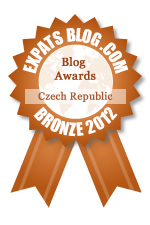By Ricky, on September 5th, 2019
Cervený kostel, Litomerice © Ricky Yates
The first Toleranzpatent / Patent of toleration of 1781, whilst giving some religious freedom to protestants living within the Austro-Hungarian Empire, was still quite restrictive, in particular insisting that any buildings should not look like churches and should not have an entrance directly onto the street. It was only after Emperor Franz Joseph 1 issued his Protestantenpatent / Protestant patent in 1861, that non-Roman Catholics were finally allowed to build and own places of worship which actually looked like churches, with towers or spires and bells, etc.
Therefore within the borders of what is now the Czech Republic, there are numerous church buildings similar to this one in Litomerice, that date from the second half of the nineteenth century, and the early years . . . → Read More: Cervené kostely – Red Churches
By Ricky, on August 5th, 2011
Map showing those areas with a majority German population in the 1930s, superimposed on an outline of the current Czech Republic. Fair use assumed as the map is from a now defunct website
Czechoslovakia was formed in 1918, as part of the break-up of the Austro-Hungarian Empire following the end of the First World War. The country’s first President, Tomáš Garrigue Masaryk, was very keen that the western boundaries of this new nation should be the historic ones of Bohemia and Moravia which predominantly follow the ridges of the surrounding hills and mountains. This was to ensure that the new nation had defendable borders and that also nearly all Czech speakers would be living within those borders.
However, one important consequence of the adoption of these borders was that many people of German ethnic origin were also incorporated into Czechoslovakia. According to a census taken in 1921, . . . → Read More: Sudetenland and the Sudetendeutsche
|
rickyyates.com is a participant in the Amazon Services LLC Associates Program, an affiliate advertising program designed to provide a means for sites to earn advertising fees by advertising and linking to Amazon.
|



Recent Comments